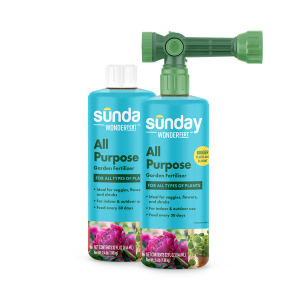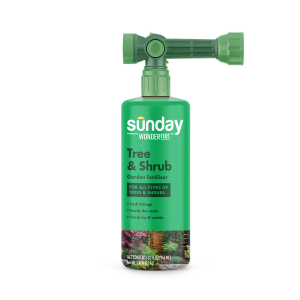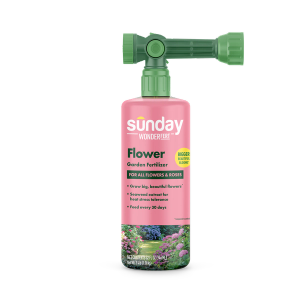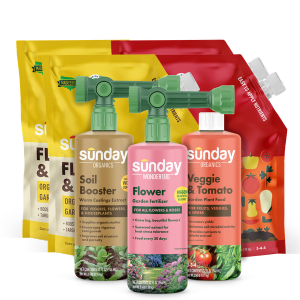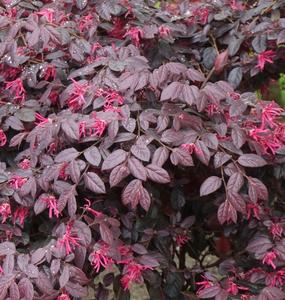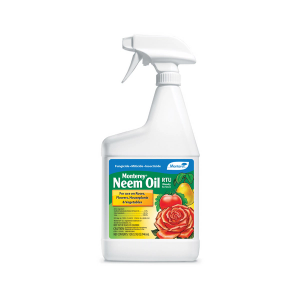Sprinkle some mulch
Mulch helps protect bare soil from erosion, keeps soil moisture and temperatures from fluctuating, and helps prevent weeds. If you've planted your shrub in a garden bed or the ground, we recommend adding 2-4 inches of mulch. Tip: Make sure the shrub's stems stay free of mulch to protect against trunk rot.
Water, water, water
Mulch can help keep your shrub nice and moist, but you should still regularly water your plant. Water slowly and deeply every 2-3 days for the first three months after planting. You can switch to watering weekly during the growing season when you hit that benchmark. Water more often if the soil is prone to drying out or if there’s a drought, and less often if the soil holds water or there’s a rainy period.
Sunday Tip:
Need a little extra help? Watering aids like water meters or tree diapers can help provide your plant with enough water.
Train with a trellis
Certain fruit or climbing rose bushes may need support. Trellising helps keep canes or vines from reaching the ground and becoming unruly. You can also create a gorgeous display since trellising can train climbing plants. Tip: Tie your plants loosely to the trellis to avoid damage.
Pause before you fertilize
Don’t fertilize your new shrub for the first year after it’s planted. It's best for your shrub to focus on root growth rather than impressive leaf growth during this time. (That part comes later.) After that first growing season, you can feed your shrub using an all-purpose or fertilizer made for woody perennials. We recommend:
Practice safe pruning
Pruning shrubs helps remove damaged or infected wood, prevent disease by increasing airflow, and shape and tidy up a shrub or hedge. If you have a newly planted shrub, hold tight on pruning unless you need to remove damaged branches. Otherwise, it’s best to wait 2-3 years before pruning. This allows the shrub to get established.
Safety is key. If you can’t keep both feet on the ground to prune, or you need to prune any branches within 10 feet of utility lines, consider calling in an expert.
Scout for pests
Integrated pest management takes a proactive approach to pest control. Prevent pests by maintaining your shrub properly. Scout regularly for insects, weeds, and disease issues and use methods like pruning or hand removal of pests when possible. Only turn to chemical pesticides as a last resort.
Cited sources
How to Plant a Tree or Shrub. Cornell University Cooperative Extension Rockland County.
Landscape: Guidelines for Planting Trees and Shrubs. Center for Agriculture, Food, and the Environment at UMass Amherst.
Planting a Tree or Shrub. University of Maryland Extension.
Planting and transplanting trees and shrubs | UMN Extension. University of Minnesota Extension.
The Cornell Guide for Planting and Maintaining Trees and Shrubs. Cornell University.
Training and Trellising Raspberries. Iowa State University Extension and Outreach.
Tree Owner's Manual for the Northeastern and Midwestern United States. United States Department of Agriculture.



